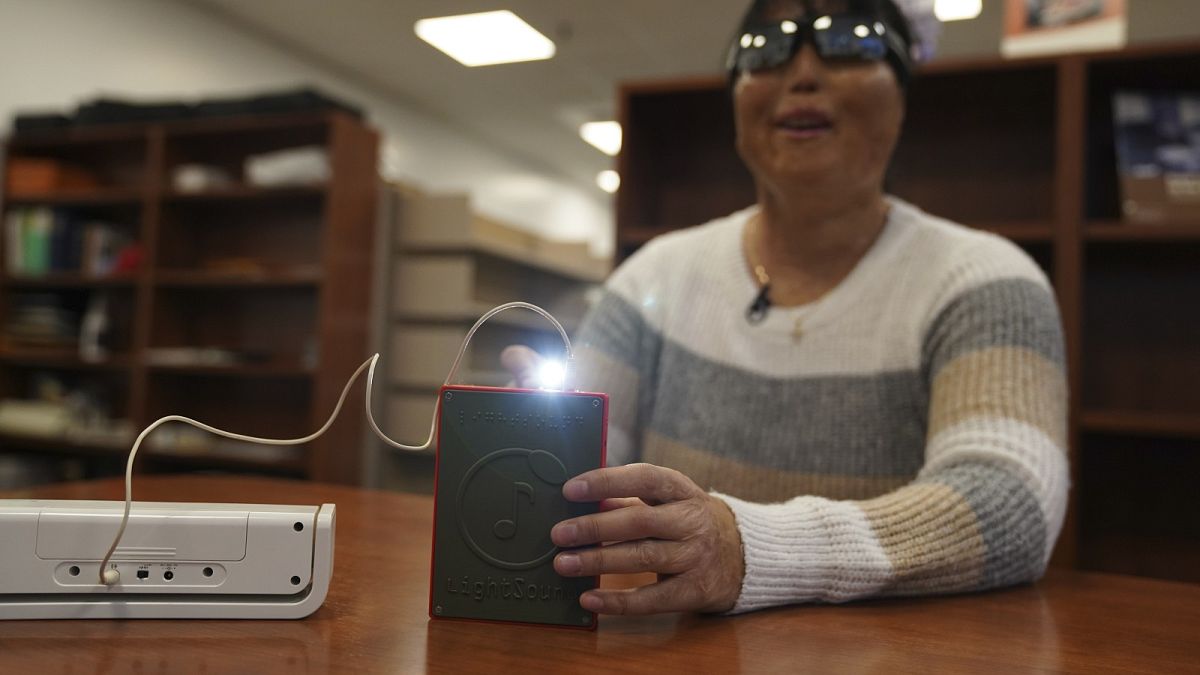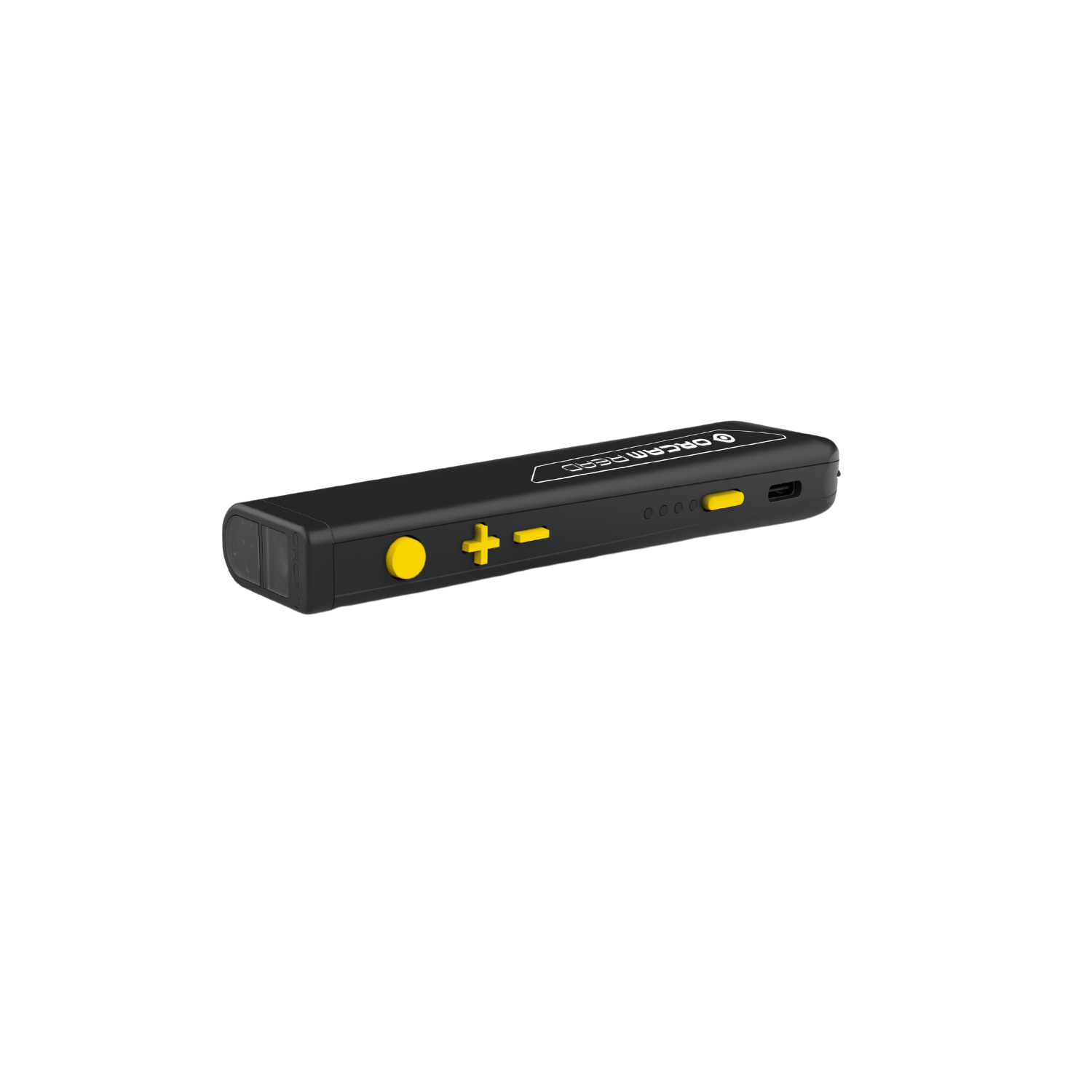AI-Powered Visual Aids: Enhancing Self-Reliance for Blind Users
AI-Powered Visual Aids: Enhancing Self-Reliance for Blind Users
Blog Article
Discover Innovative Devices Designed for the Visually Impaired
The growth of ingenious devices for the visually impaired stands for a significant development in accessibility and freedom. Technologies such as smart glasses with AI capabilities and mobile applications designed to supply auditory summaries are improving everyday experiences for users. Furthermore, wearable gadgets that use haptic feedback boost environmental awareness, while modern Braille advancements provide brand-new means to engage with text. As these tools remain to progress, their influence on the lives of those with visual problems raises crucial concerns concerning the future of inclusivity and freedom in various elements of life. What lies in advance in this technical landscape?
Smart Glasses for Navigation

Smart glasses made for navigating are revolutionizing the way visually impaired individuals connect with their environment. These sophisticated gadgets use a mix of video camera technology, expert system, and acoustic responses to offer real-time information concerning surroundings. By utilizing barrier discovery systems, clever glasses can alert customers to prospective risks, enabling safer movement in both unfamiliar and familiar setups.
The assimilation of GPS technology further boosts navigation abilities, permitting customers to obtain acoustic instructions as they move. This hands-free method not just cultivates freedom yet also encourages visually impaired individuals to navigate metropolitan landscapes with raised self-confidence. Additionally, lots of smart glasses are equipped with attributes that recognize landmarks and road indicators, offering contextual information that enhances the user experience.
In addition, the growth of these tools is continuously progressing, with companies functioning to improve the precision of object acknowledgment and increase the series of navigational functions. As wise glasses become more inexpensive and obtainable, they hold the potential to substantially change everyday life for visually impaired individuals. Inevitably, these cutting-edge devices represent a vital action towards inclusivity, offering enhanced movement and a higher feeling of autonomy for people navigating the world around them.

Mobile Application for Daily Living
Just how can mobile applications improve the everyday lives of aesthetically damaged people? Mobile applications are revolutionizing the way aesthetically damaged individuals browse their atmospheres, handle daily jobs, and accessibility details. These applications give necessary support with various functionalities, fostering freedom and improving quality of life.
A number of innovative mobile applications are designed particularly for day-to-day living. Apps like Be My Eyes connect visually damaged users with sighted volunteers by means of video phone calls, enabling them to get real-time assistance with jobs such as checking out tags or browsing unfamiliar areas. In A Similar Way, Seeing AI, created by Microsoft, utilizes expert system to explain environments, reviewed message, and recognize items, successfully changing a mobile phone into a powerful device for daily help.
Furthermore, navigation apps tailored for the aesthetically impaired, such as Aira and BlindSquare, supply audio-based directions and environmental details, making it possible for users to traverse their surroundings safely and confidently. Past navigating and prompt help, mobile apps also support company and job administration, with functions that help customers establish pointers, create to-do listings, and track consultations. In recap, mobile applications act as important sources, empowering visually impaired individuals to lead more independent and satisfying lives.
Wearable Technologies for Aid
Empowerment through innovation is increasingly noticeable in the world of wearable tools made to aid visually damaged individuals. These cutting-edge devices integrate seamlessly into day-to-day life, enhancing navigation and giving vital comments to individuals. As an example, clever glasses furnished with electronic cameras can identify faces and check out message out loud, permitting customers to interact more with confidence in specialist and social setups.
Another noteworthy improvement is using optical glasses haptic comments systems in wearable tools. These systems utilize resonances or other responsive signals to convey details about the user's atmosphere, such as obstacles or adjustments in surface, enhancing flexibility and safety. Wearable innovations likewise consist of wristbands that connect to smartphones, informing customers to alerts via refined vibrations, therefore enhancing connection without dependence on aesthetic hints.
As these technologies proceed to evolve, they are not only enhancing freedom for aesthetically impaired individuals however also cultivating a higher sense of inclusion in society. By connecting this post the void between obstacles encountered in everyday living and the possibility for autonomy, wearable innovations serve as crucial devices in the mission for equal rights and empowerment for those with visual impairments.
Audio Description Tools
Audio summary tools play a vital function in improving ease of access for visually impaired individuals, providing them with the ability to engage with aesthetic media. AI-powered visual aids. These devices use narrated descriptions of essential visual aspects in films, tv shows, and live performances, making certain that users can totally understand the context and feelings communicated via visuals
Sound description can be integrated into different systems, including streaming services, cinema testings, and live theater. Many popular streaming solutions now consist of audio summary as an ease of access attribute, permitting customers to pick it quickly. In addition to mainstream media, specialized applications additionally exist, providing audio descriptions for art exhibitions, galleries, and other cultural occasions.
The effectiveness of audio summary hinges on the ability of the narrators, that should convey visual details succinctly without interfering with the initial audio. Innovations in this area are also paving the method for even more individualized experiences, where users can adjust the level of information and pacing according to their choices.
Braille Innovations and Tools
Braille advancements and tools have actually considerably changed the means aesthetically browse around these guys impaired individuals communicate with text and info. Modern developments have actually led to the development of versatile devices that improve proficiency and freedom among individuals.
In addition, mobile Braille notetakers combine traditional Braille input with contemporary functionalities, helping with note-taking, organizing, and record editing on the go. AI-powered visual aids. These small gadgets typically include text-to-speech abilities, linking the gap between Braille and auditory information
In enhancement, innovative Braille printers have actually arised, allowing customers to generate Braille labels, records, and instructional materials effectively. This accessibility promotes greater engagement in academic and professional atmospheres, inevitably advertising inclusivity.
Additionally, study right into wise Braille innovations remains to broaden. Gadgets that include expert system are being discovered to provide real-time navigating help and contextual details, enhancing the individual experience in diverse setups. Overall, these technologies reflect a commitment to empowering aesthetically impaired people with modern technology, ensuring they can conveniently gain access to and involve with the globe around them.

Final Thought
The innovation of innovative devices for the aesthetically damaged dramatically enhances freedom and high quality of life. Smart glasses, mobile applications, wearable innovations, audio description tools, and Braille technologies collectively encourage individuals by offering essential navigation assistance, ecological awareness, and boosted reading experiences. These technologies not only foster higher addition yet likewise promote freedom in day-to-day activities, eventually adding to an extra easily accessible and equitable society for aesthetically damaged individuals. Proceeded growth in this area holds pledge for further enhancements.
As clever glasses come to be extra budget-friendly and available, they hold the prospective to substantially change daily life for visually damaged individuals. Mobile applications are transforming the method aesthetically impaired individuals browse their environments, handle daily tasks, and access info. Apps like Be My Eyes link aesthetically impaired users with sighted volunteers by means of video phone calls, enabling them to obtain real-time support with jobs such as reading labels or browsing strange areas.Furthermore, navigation apps customized for the aesthetically damaged, such as Aira and BlindSquare, offer audio-based instructions and ecological details, allowing individuals to traverse their environments securely and with confidence.The innovation of innovative devices for the visually impaired considerably boosts self-reliance and quality of life.
Report this page